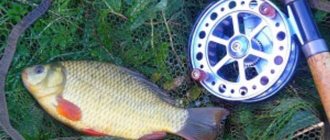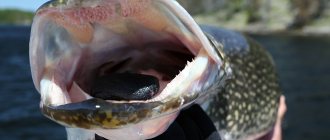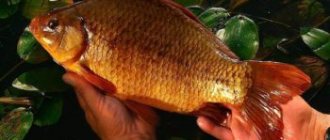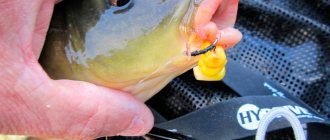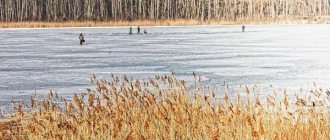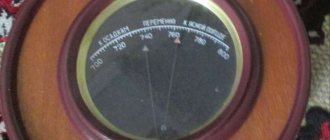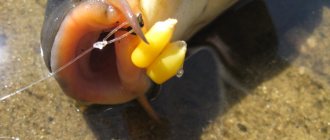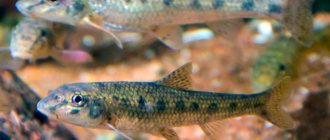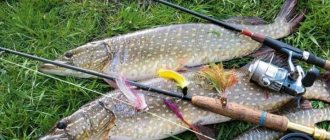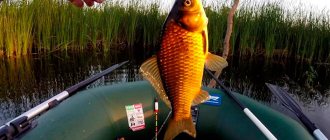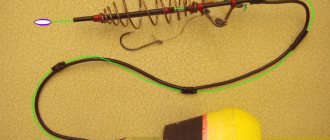Catching crucian carp is at the same time simple, but no matter how paradoxical it may sound, at the same time it is the most difficult. Most likely, this common fish can be classified as one of the most fastidious and unpredictable trophies in terms of their bite. Many experienced fishermen began their passion for fishing by fishing for crucian carp, because the equipment for fishing for crucian carp is not complicated, and does not require any special investments. In addition, the distribution area of fish is incredibly wide, and conditions for its comfortable living and successful reproduction do not require special greenhouse conditions.
The accessibility of fishing for crucian carp contributes to its popularity, but to achieve significant success in catching truly trophy specimens, the fisherman needs to approach the process with the utmost seriousness and have certain knowledge both in the field of fish behavior under various weather conditions, and in the field of selecting and setting up fishing equipment . How to properly catch crucian carp, with what baits and what equipment, what kind of techniques in setting up rigs should be used in order to tempt this whimsical fisherman to bite, the article presented below will help the angler figure it out.
Types of crucian carp and their description
Catching crucian carp, a natural native of the European part of the country, is becoming more and more difficult. It is more common for fishermen to see in their catches the Far Eastern migrant, the silvery brother of our golden species, this representative of the carp genus.
Golden or common crucian carp are representatives of the European ichthyofauna, living in stagnant or weakly flowing reservoirs ranging from cool Norway to warm ponds in Italy. Currently, the fish can be found in wetlands in the Asian part of Russia, as well as China and Mongolia. The fish has a flat and rounded body with a distinctive dorsal fin and a brown tail. The rest of the fin plumage is distinguished by the presence of a red border along the edges of the elements. The large scales of crucian carp give off a distinct copper-golden tint, which gave rise to the name of this type of fish. The belly of the fish is much lighter than the body and has a light brownish color. The mass of individual individuals can reach 5 kg and half a meter in length. Crucian carp lives for about 10–12 years . Golden crucian carp loves swampy areas of lakes and rivers, and also populates water areas heavily overgrown with algae.
The silvery species is a representative of the ichthyofauna of the Far Eastern Pacific Ocean. It came to the European part thanks to artificial migration by humans in the middle of the 20th century as an industrial fish species. It quickly adapted to local conditions and successfully pushed aside the golden species, becoming the dominant branch of crucian carp. The fish has dense and large silver-gray or greenish-gray scales and transparent or olive fins. In size, the fish grows up to 3 kg, 40 cm long, and lives about 7–9 years. Unpretentiousness to living conditions allows fish to populate water areas of any size and purity. Crucian carp eat both plant and animal foods, and when the water cools below 10 degrees, they noticeably reduce their activity.
Which type of crucian carp starts biting earlier?
It was noticed that small individuals, which weigh no more than 300 grams, have less body fat. Because of this, they are forced to eat more, which is why such crucian carp come out of hibernation earlier.
In addition, due to their modest size, these fish quickly get rid of parasites that have stuck to them during the winter. That is why small crucian carp often bite in early spring.
Lifestyle of crucian carp
It should be noted that some fish species begin to lead an active lifestyle earlier than others. This applies to silver crucian carp, which bite well already in March. At a temperature of 13° it begins to spawn, which is why this species is so common in our reservoirs.
Golden crucian carp is more thermophilic, waiting for warm water to emerge from hibernation. It is almost impossible to catch it before May, because only at a water temperature of 15-17° is this fish ready to become active. Features of fishing for crucian carp in lakes and rivers
Lake carp
Experienced fishermen in early spring prefer to hunt this individual in systems with standing water, that is, in ponds and lakes. This is due to the fact that such closed places warm up faster than rivers. The water level in lakes and ponds rarely rises due to the spring melting of ice, although they take longer to get rid of the latter than the same rivers.
Around mid-April, the individual begins to bite the bait well. If spring came earlier, then the fish will be active already in early March. But this is subject to stable atmospheric pressure, like most freshwater abodes, crucian carp does not like sudden changes in weather. At such times he is lethargic and has little interest in food. Fishermen noticed that the flowering of bird cherry coincides with the time when the activity of these individuals began.
The first two months of spring are best for hunting crucian carp in the afternoon, when the sun has time to warm up the lake or pond. In May you can also go out for morning fishing; this freshwater fish will already develop an interest in the bait at such hours. In the last weeks of spring, hunting for crucian carp will be the same as in the summer months.
When do they start catching crucian carp in rivers?
River specimens can be caught all year round in small creeks or oxbow lakes. Moreover, the fish readily bite during the winter months. But everything changes with the arrival of spring. Floods raise the water level in such systems and fishing here is no longer possible.
As soon as everything returns to normal, the hunt for this individual is resumed. In the southern regions, the water level recovers faster, so fishing for crucian carp here begins earlier.
Where to fish
You can successfully catch crucian carp in both still and running water. The fish is insensitive to oxygen in water and can successfully live and reproduce both in crystal clear waters and in the mud of swamp clearings. Bottom foundations also do not have a special role for the life of crucian carp; silt and sandy-clayey foundations are easily inhabited by this fish. The fish avoid great depths, rarely settling in holes over 3–4 meters. Since crucian carp are the basis of the food supply of all predatory fish, the basis in its habitat is the presence of areas of water areas that provide the possibility of reliable shelter.
During the warm season, the role of these natural screens is played by dense thickets; during the period of cold water, schools of crucian carp retreat to snags, bottom construction debris, dead wood and mud banks, where it is possible to reliably hide from any predator. Crucian carp avoid strong currents, looking for quiet backwaters covered with grass. Small fish almost always stay under shorelines.
Important! Fishing for large crucian carp will certainly be more successful at long distances from the shore.
But you can catch crucian carp in the spring only on well-warmed shallows, where the fish constantly come out to warm themselves.
Catching crucian carp with a float
The classic fishing tackle for crucian carp is a float. Even in childhood, many anglers mastered the fly rod. It can be successfully used today.
- The length of the rod ranges from 3.6-5.0 m.
- The line is attached directly to the tip of the fishing rod. The thickness of monofilament is usually 0.20-0.25 mm.
- The traditional float for equipping fly tackle will be a goose feather.
- For loading you will need several lead pellets weighing from 0.2 to 1 g.
- To make a float, you need a nylon fishing line with a diameter of 0.14-0.18 mm and a hook No. 8-12.
Fishing for crucian carp at a further distance from the shore is done using a match fishing rod.
- To assemble the tackle, a rod 3.3-4.0 m long, equipped with guide rings, is required.
- A spinning reel with a 1500-2500 spool is placed on the fishing rod.
- To ensure the range of the tackle, the fishing line must be wound to the edges of the spool.
- Due to the long casting range, a bright and large float with good flight characteristics is required.
- To load a bite alarm, you may need a sliding sinker weighing 5-7 g, as well as additional supplies in the form of lead pellets.
When does crucian carp bite?
Crucian carp are quite thermophilic. Their life processes slow down as the water temperature drops below 8–10 degrees. During the freeze-up period, the fish stands motionless at the bottom or buries itself in the mud, practically not feeding. As the ice melts and the water in the shallows warms up, the fish emerge from their winter torpor, and the small fish begin to actively bite, approaching the very shore. Larger individuals become more active as the weather stabilizes, the absence of cold mornings and the water warms up to 12–15 degrees, beginning to fatten in anticipation of their spawning period. As a rule, such weather conditions are created towards the end of April, beginning of May. Spawning itself occurs at the end of spring and beginning of summer for 10–15 days.
Important! During the spawning period, the fish does not feed.
After spawning, the bite stabilizes throughout the summer and early autumn, until the first cold snap and the beginning of prolonged rains. Subsequently, crucian carp bite unstably in the fall and only during periods of warming, going to the shallows. With serious frosts, which cause the appearance of ice edges near the coast, they cease to be active altogether, retreating to their wintering areas. During the freeze-up period, crucian carp do not bite, the exception may be days of strong thaws, when the angler’s knowledge of the places where fish accumulate in a reservoir can help to find crucian carp that shows minimal activity and catch it.
During the warm season, crucian carp are most active in the early morning and evening hours. In autumn, the bite can continue throughout the day. Fish love clear weather with a gentle wind that causes ripples in the water. Frequent rains and cold snaps weaken the bite. Warming and stabilization of atmospheric pressure provide the prerequisites for high feeding activity of fish.
Crucian carp: a brief description of where, when and what to catch
There are two types of crucian carp: golden (yellow-red) and silver.
Golden carp (or common)
- Maximum length of goldfish: 50 cm
- Largest weight of goldfish: 5 kg
- How long does goldfish live: up to 12 years
Goldfish
- Maximum length of silver carp: 45 cm
- The largest weight of silver crucian carp: 1 kg or more
- How long does silver carp live: up to 15 years
You can catch crucian carp both in the morning and in the evening, based on your experience, everything can depend on the reservoir, the number of fish in the reservoir and its food supply.
so I know that any fish is easiest to catch and faster either at night or during the day when it is very quiet. But since many fish apparently sleep and rest at night, this is also not an option. If crucian carp rests at night, then it will most likely be caught, I think to catch it during the day very quiet at the same time.
I often went fishing with my husband. And as far as I know, there is a good bite. Early in the morning at dawn and in the evening at sunset. At this time of day, the fish begins to “eat”, it is very active. And during the day the bite is bad, weak, you can sit all day and catch 3-4 pieces.
Crucian carp is not a fastidious fish at all; it bites at any time of the day and almost all year round. Therefore, the answer to your question is that as soon as the evening begins, the evening bite of crucian carp begins. So grab your fishing rods and go fishing.
Crucian carp bite best in the early morning, when the sun rises, and then for a few more hours. Some period of time mod
may be the most active, then the bite gradually decreases, and during the day it usually doesn’t bite anymore.
Then after lunch, towards evening, the evening bite begins.
Crucian carp bite well on worms, maggots, corn, and sometimes regular semolina.
You can catch crucian carp both in the morning and in the evening, based on your experience, everything can depend on the reservoir, the number of fish in the reservoir and its food supply.
The crucian carp is active early in the morning, when the sun rises and the first rays touch the pond,
by about 10 am the bite subsides. But you can catch crucian carp during the day by directly feeding the place, I catch crucian carp in the afternoon from about 14:00 until the evening until the sun sets, and I have a good result. From this I conclude that You can catch crucian carp all day, but the most active bite is in the morning, but sometimes in the afternoon from 14:00 it is no worse.
A good article on catching crucian carp in the spring was written here. People briefly and clearly described the method of choosing gear, choosing a fishing spot and catching this beautiful fish. The article also describes a recipe for frying crucian carp with cuts, so that after frying there is a minimum of bones. very informative for beginners.
If you want crucian carp, don’t throw bait at the anchovy. Will help.
The best thing for crucian carp in the spring is live bait. if the water is still cold and the crucian carp is not so active, then bloodworms will be just right. and if the water is already warm enough, then you can attach a worm. only exclusively dung beetles and not rain. it is brighter, more tenacious and has a characteristic smell.
and it is also very important not to forget that during spawning crucian carp bites like a machine gun and grabs everything. In this case, maggots are well suited because they are more difficult to knock off the hook and will last longer than a worm, and especially a bloodworm.
One fishing incident was out of the ordinary - we came to the lake with a group of 6 people. no one got a bite. just awful. We tried all the attachments and intermissions. but it turned out from the locals that they only bite on the crust of black bread (not the crumb, but the crust). This is how it happens
I had such a case once. It turned out that I was left without worms while fishing. Either they spread due to my negligence, or something else. I walked along the shore and found a tin of rainwater with worms in it. There could be no question about the “freshness” of the worms, since they were apparently already two-day-old “drowned”. There was nothing to do, I tried to fish with what I had and, to my surprise, the crucian carp pecked perfectly on these worms. True, there was nothing to compare with; I didn’t have live worms.
In general, the eternal question of when a fish bites well can be answered with confidence: “Whenever it wants to eat.”
This fishing rod itself represents a fishing line with a load. Hooks are located on leashes above the load. The essence of fishing is as follows: the load is untwisted and thrown to the right place. In order to detect a bite, a bell alarm is used.
How to catch crucian carp
Gear for catching crucian carp is varied and it is quite difficult to judge their effectiveness, because the characteristics of the reservoir and the capriciousness of the fish can significantly influence the final result, sometimes even regardless of the skill of the fisherman. In continuation of the article, the reader will be presented with descriptions of the main types and methods used for crucian carp fishing. Having analyzed this data, the fisherman, based on the conditions on the reservoirs, his own practice and the availability of the necessary equipment, will be able to independently navigate the situation and determine for himself what is best to catch crucian carp.
Float rod
Of course, float fishing can be considered a classic of crucian carp fishing. The fly rod satisfies most fishing conditions on small standing ponds on coastal shallows for medium-sized specimens. The length of the gear is 4–7 meters, equipped with a monofilament fishing line of 0.15–0.20 mm, a sticker float, a pellet weight and a 10–12 number hook – this is a simple installation that will allow you to hunt for crucian carp at short distances. More advanced anglers who prefer fishing for trophy fish will have to equip Bolognese or match gear in addition to the above-mentioned composition of elements, thinning the equipment by including in the rigs a thinner leash with a length of 10 to 30 cm and a thickness of 0.10-0.12 mm, a catch weight of tenths of a gram and hook according to the size of the nozzle in the number range from 8 to 14 sizes.
Practice has shown the optimal use of a waggler-type float as a signaling device, with a mass not exceeding three grams. Another effective way of fishing with float equipment is to use a plug. The method is ideal in that the bait is accurately and rationally supplied to the fishing zone, and also, thanks to the feeder, delicate and thin installations are used, allowing you to catch cautious and large fish without fear of their landing.
Feeder
For feeder fishing, rods with test weights of 50–70 grams and a length of 3.5–4 meters are selected. As a cord, use a braided fishing line no thicker than 0.12 mm in the color of the water of the fished reservoir. The use of braided cord is justified by the fact that large crucian carp are found in summer and early autumn at distances far from the shore, and with low feeding activity, their bites can be barely noticeable. A rigid braided cord combined with a soft, sensitive quiver tip will help you recognize even the most careful bite of a crucian carp.
An inertia-free reel does not need high traction characteristics, and crucian carp feeder fishing, due to the obviously small mass of the catch, can do without the presence of a baitrunner. For the device, it is enough to have an adjustable clutch and a spool for a braided volume of one hundred meters, which, with a modification of 2000–2500 units, will always cover the conditions necessary for catching crucian carp. Inline installations using spring or method type feeders with the introduction of bait for catching crucian carp directly into the food is precisely the technique that allows you to achieve more significant results in crucian carp fishing.
Bottom gear for crucian carp
The difference between classic donkey fishing and feeder fishing is the absence of a rod and feeder. Sometimes, with a high degree of fish activity, this method is quite productive and allows you to catch only trophy specimens. The main line of the tackle is stored on a wooden reel. The thickness of the fishing line for such donks is taken in the range of 0.25-0.35 mm. As a rule, a nylon line cut of 70–100 meters for casting is sufficient with a margin. A lead sinker weighing 100 grams or more will help make the cast far, and the equipment will be securely anchored at the bottom and thereby help the process of self-hooking the trophy.
A leash no more than 20 cm long is made of wood with a diameter of 0.15-0.20 mm. For plant baits and small animal baits, hooks with a small shank are used. The worms are held securely in reverse by hooks with a long shank. To determine the bite in donks of this type, bells are used, which are placed on a stretched and secured cord to a peg driven into the shore.
Fishing with an elastic band
Regardless of the time of year, it is better to catch large and cautious crucian carp with a classic-style donka, but with an elastic band. This additional element in the design of the tackle allows for silent fishing without repeatedly rethrowing the load of the equipment. A model is tied to the end of the main cord of the donkey, after which the load itself is directly attached to the donkey. Thanks to the high coefficient of stretch of the elastic band, the load holding the equipment is anchored at the bottom at the very beginning of fishing, retrieving the caught fish and changing baits, followed by unhindered removal of the cord to the shore.
The advantages of the method are that it covers large fishing areas over a fairly long fishing distance. After all, cargo can be transported to any distance by boat. In addition, on one such tackle you can install a large number of leashes, using simultaneously baits of plant and animal origin, and having determined the preferences of the fish at the moment, switch to a more promising bait option.
Spinning rod and fishing rod with side nod
Spinning rods are not used for targeted fishing for crucian carp, but sometimes catching crucian carp in the summer with silicone bait near the walls of coastal thickets is quite real and not such an exotic thing. For fishing, they use a strong-smelling silicone worm in a natural brown-red color, made of so-called edible rubber, making rather slow step-by-step retrieves similar to a jig. The worm is attached to a stationary jig head weighing up to three grams, and thus, in the bycatch of spinning anglers who are fond of microjigging, trophy crucian carp can become quite real and tangible prey.
Avid crucian fishermen know firsthand about a fishing rod with a side nod and its high efficiency. This is an indispensable fishing tool in windows of dense underwater vegetation in the summer. The nod can be equipped with a Bolognese fishing rod with sizes starting from 6 meters. A reel with fishing line and the nod itself are attached to the tip of the rod. The sinker is a heavy jig with a type of hook with a long shank. To make it attractive, a bloodworm is attached to the hook. The fisherman fishes points that are promising for hunting, making five or six throws of the jig in different water horizons, moving from place to place.
Fishing for crucian carp in summer
As aquatic plants grow, crucian carp have more places to feed. Tender green shoots, leeches and insects become the main food in summer. Interesting fishing for crucian carp begins in the windows of water thickets. The best way to do this is from a boat. A fly rod is required for fishing. In clean water areas, fishing is carried out using bottom gear. In addition to animal food, crucian carp actively feeds on plant food. Therefore, fishing with a feeder, nipple or spring can be very productive.
Summer crucian bite
At what depth to catch crucian carp
In spring, crucian carp stay on quiet shallows, where the water warms up with much greater intensity than in deep places with a current. Spring fishing is rarely carried out at depths of more than one and a half meters. Even after the completion of spawning, the fish does not move away from the spawning grounds, which it also arranges in shallow water, and for another couple of weeks these circumstances provide the prerequisites for developing spring fishing strategies exclusively in shallow waters. Closer to July, the water reaches its optimal annual temperature values of 18–22 degrees, and large fish gradually descend to depths that rarely exceed 3–4 meters.
Crucian carp on the slope bite better in holes where there is vegetation and other bottom anomalies, which allows it to quickly find itself in this shelter in case of danger. Large individuals will stay in the depths until the autumn cold snap, when they will be forced back to shallow water by more intense heating of the water on sunny and warm autumn days.
Best fishing spots
They can be seen with the naked eye. During the spring zhora, crucian carp very actively digs in the silt, raising turbidity and bubbles from the bottom. You can also notice how he swims among the grass (reeds, reeds, etc.) - it sways noticeably.
In general, in the spring, schools of crucian carp come closer to the shore in the spring, where there is enough food. It has been noticed that active biting is observed in places where the water is well heated by the sun. In the shaded areas of the reservoir, the bite is very sluggish.
What do crucian carp bite on?
The crucian carp menu includes both plant and animal foods. Under natural conditions, fish love to eat insect larvae and young growth of aquatic vegetation.
Important! It is worth noting that preferences for the choice of food items vary depending on the season of the year and water temperature. In cold water in early spring and autumn, gourmet preferences are focused on animal food. In the summer season, plant baits will be a priority.
Dung worms, bloodworms and maggots are the most common types of animal bait. In some reservoirs, fish willingly take the meat of shells, shrimp and crayfish. Among the best vegetable baits for crucian carp, the first places in use are canned sweet corn, boiled barley grain and white bread. Fishing for steamed wheat and barley grain, as well as peas and various types of flavored dough is also promising.
Small boilies with sweet aromas and pellets have recently been increasingly used by anglers in crucian carp fishing, showing stable and significant results. Artificial baits in the form of silicone imitations of maggots, bloodworms and worms, as well as foam balls impregnated with attractants, were not left out.
Baits and baits
In the spring and autumn seasons, crucian carp prefers bait of animal origin:
- worm;
- maggot;
- bloodworm.
In summer, plant attachments:
- boiled cereals (wheat, pearl barley, corn, peas);
- porridge (semolina, millet, mastyrka, hominy);
- bakery products and dough.
- boilies
Read more about the baits and attachments used for crucian carp.
How does crucian carp bite?
The type of crucian carp bite directly depends on the activity of the fish. Aggressive and fattening in a school of crucian carp practically does not try the bait, immediately swallowing the food on the go. In the classic form, the bite begins with tasting and sucking the bait, which can last for several minutes, and after this procedure the food is swallowed. In float fishing, such a bite looks like a play of the float with its subsequent pulling towards the shelter, which is a signal to hook. Passive fish hang the bait in one place for a long time, which is noticeable only by the slight trembling of the float. The notch is made after a specific movement of the float to the side or its sinking to the bottom. Low fish activity requires proper selection of hook sizes, otherwise, constantly pricking the tip, the cautious fish will throw the bait.
Bait for crucian carp.
As a rule, spring crucian carp are very hungry, and they can be caught in large quantities even without bait. But only if you have chosen the right place and the weather conditions are completely suitable for these fish.
But in order for the bites to be frequent and the fishing itself to be more effective, I recommend feeding the fish a little. The main thing is that the bait is not very filling. It is enough that it attracts them with its aroma.
Breadcrumbs can serve as the basis for spring bait. You can add a little crushed biscuits, semolina, etc. The composition of the bait for catching crucian carp depends on your imagination. If you don’t want to get creative, you can buy ready-made food for carp fish at a fishing store.
But be sure to add “animal” ingredients to the bait. Finely chopped earthworms are very good at attracting hungry fish after winter. Small bloodworms are also a very good bait that will attract crucian carp. Several times I tried adding finely chopped canned pork to the bait - and I liked the result! Then I decided to conduct an experiment: before adding the meat, I fried it, and the smell became more appetizing. And in this case, the result was not long in coming. Fishing became more interesting, bites were more frequent.
But, unfortunately, I was not happy for long. The next day they did not react to this food in any way. Then I considered it necessary to change the place of fishing and try to feed the fish with breadcrumbs alone, without any additives. The result is that they began to peck more often.
It is impossible to say for sure what bait to put on the hook. Of course, crucian carp will best bite on an ordinary worm or bloodworm. But experienced fishermen always recommend trying something new. Even seemingly non-fishing foods like marshmallows are very popular with crucian carp. Although animal baits attract these fish with their calorie content and satiety, do not forget about corn, peas, pearl barley and pasta.
Secrets of fishing for crucian carp
To successfully catch this cautious and cunning fish, the angler must know some secrets that will help him find the right methods for organizing the fishing process that give real results. In any reservoir, you need to try to determine in advance the places where the fish prefer to be. It is at such points that you need to organize bait and do preliminary feeding. Based on the results of several fishing trips in the same reservoir, determine the optimal hours for crucian carp to go out for feeding. This will help you use your fishing time wisely. An important factor is determining the diet of the fish. Correctly selected bait is one of the foundations of success.
Important! When fishing, using sandwiches increases the chances of the final result.
For example, a bait for large crucian carp in summer should consist of both plant and animal components at the same time.
The best biting areas for crucian carp in the pond
I drew the best biting areas for crucian carp in a pond in the summer in weather favorable for crucian carp, and not for fishermen, in the format of a drawing of one of the closed reservoirs that I had studied well. The conditions for the existence and biting of crucian carp in large oxbow lakes and mined-out quarries are identical.
The two brown dotted lines on the pond diagram indicate the flooded river bed. The blue lines correspond to the contours of the banks. Construction waste and driftwood at the bottom of the pond are shown in gray.
The directions for casting float gear in the hot summer from one’s own and the opposite steep bank of the pond are drawn with black lines. The bite of crucian carp on a float rod will be better in areas near or among algae. But nozzles on jigs of tackles with vertical equipment can also be lowered there.
For promising fishing along the blue line in the drawing, fishing elastic hooks are installed; due to algae, no more than 3-5 hooks. To improve the bite, the area of the bottom of the pond in the place where crucian carp is caught should be fed. Then conditions will appear for promising catching of hand-sized fish in the hot summer, which cannot be said about the bite of large crucian carp.
The fact is that well-fed, cautious large silver crucian carp do not constantly graze in the shallows of the pond, but they can go out to feed from the bed of a dammed river several times a day. Let's say we rise from a hole near a pond dam, then return to our parking areas.
Catching methods of spring fishing
When fishing for crucian carp in the spring, take into account the recommendations of experienced fishermen friends, as well as your personal experience collected over the years of fishing. If it is missing, start experimenting and look for something universal.
As soon as you find yourself on a pond and select several promising places for fishing, feed 2-3 different places at a distance of 20-30 meters from each other. Do not forget that in the spring crucian carp is extremely cautious, so it rarely takes the bait on the move, forcing the fisherman to wait for the right moment. Also, the fish constantly moves from one place to another, appearing either in the upper layers of water or in the most inaccessible areas. Sometimes a fisherman has to use complex manipulations and techniques that allow him to lure out the prey without spooking it.
Plug fishing rod
This rod is designed for precise and accurate delivery of bait to the right place, which makes it especially effective for spring fishing. However, for the upcoming fishing to be successful, preference should be given to fairly rigid models.
When equipping the selected form, use a thin fishing line with a cross-section of 0.8−1.2 mm . As a float, you can use a goose feather or a model with a load capacity of no more than 0.7 grams. When plug fishing, special fishing tactics are used:
- Immediately before starting fishing, about two hours before, you need to feed 5-6 different areas, and then start fishing them.
- After placing the bait on the hook, with extreme care and without splashing, you need to deliver it to the right place, and then carefully monitor the behavior of the float.
- If after some time a quick bite follows, and then a second, third, etc., then you are in the right place, and there are a lot of fish here. If the bite is not particularly active, try changing the place and fishing technique.
- Explore all horizons of the water, both when float fishing and when fishing with a jig. Biting happens at any depth, so be prepared for any, even the most unpredictable incidents.
To catch a trophy fish, you must demonstrate good fishing skills and faith in your abilities. Fishing with a jig is really very difficult.
Fly rod
A fly rod is an effective fishing tool for finding crucian carp in a small area. It’s no secret that this type of gear does not have a reel, so the fishing line here is exactly the length of the rod. When choosing a float, use long and thin products, while the length of the rod itself should be 4-7 meters, depending on your preferences and fishing location.
Fly tackle is popular due to its ease of use. Fishing with it is really very convenient, while the fisherman can independently remove the windage of the fishing line and easily control the overall process. With the help of a fly rod you can quickly change the fishing area and chase a school of moving crucian carp. In this case, it is not necessary to use too much bait - it is enough to periodically throw small balls with the mixture into the water. You can fish until the water warms up very much and the crucian carp goes to depth.
Match tackle
Another popular fishing invention that works especially well when fishing for crucian carp in the spring. Here the fisherman needs to decide on the length to which he will have to cast the tackle, following the algorithm : the higher the indicator, the longer the form. The universal version has a 4.2-meter length. As a reel, it is better to use models with a soft and reliable friction brake. The line must be wound evenly, otherwise there is a risk of formation of beards and complex knots. The float can be taken fixed.
For match gear, special types of fishing line are used. They should be black and easily sink in water. As soon as the water temperature rises to certain levels, and schools of crucian carp quickly move away from the shore, that’s when you can start using a match fishing rod.
